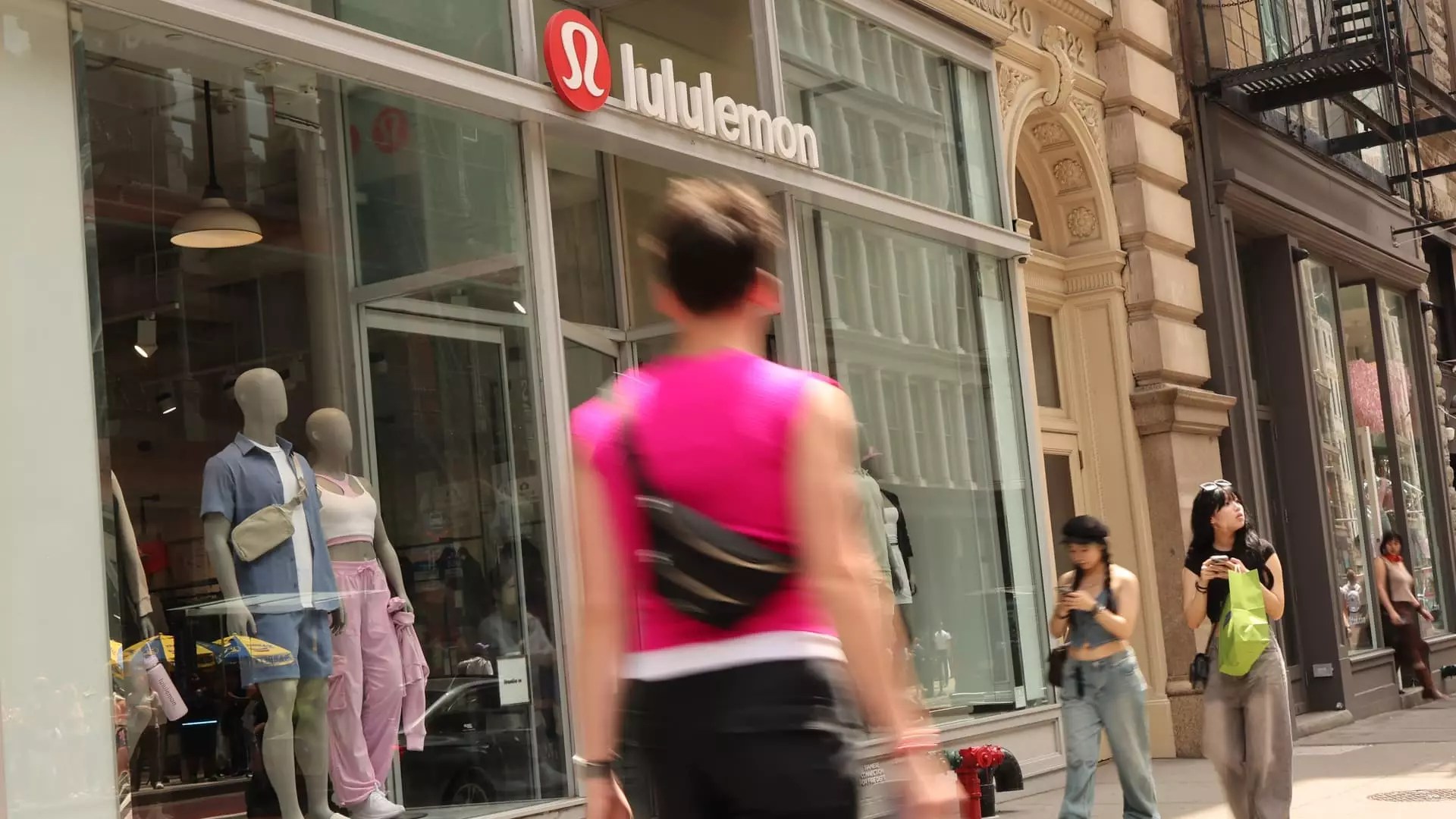Lululemon Athletica, a company perceived as a titan in the activewear industry, recently reported earnings that, while technically beat analysts’ expectations, have sent shockwaves through the market. This isn’t just a regular earnings report; it serves as a sobering reminder of the complexities and challenges inherent in today’s macroeconomic landscape. The company’s decision to cut its full-year earnings guidance didn’t seem to surprise anyone—after all, the unpredictability of tariffs and an uncertain economic environment loom large for any brand attempting to navigate these treacherous waters. The retail world is reeling from major policy shifts, and Lululemon is no exception. Market responses are often emotional rather than rational—showing that even slightly good news can plunge a stock when paired with bad forecasts, as seen with Lululemon’s shares scraping a 20% decline in after-hours trading.
Strong Numbers, Weak Outlook
When dissecting Lululemon’s latest earnings data, it is valid to acknowledge that the company reported a net income of $314 million, or $2.60 per share, compared to $321 million or $2.54 per share from the previous year. Yes, revenue showed an uptick from about $2.21 billion to $2.37 billion for the same quarter—moving beyond Wall Street’s countdown of $2.36 billion. However, the crux of the matter lies in the company’s glaring downgrades in future earnings projections. Previously forecasting an earnings per share range of $14.95 – $15.15, Lululemon now settles for between $14.58 to $14.78. This is a sobering blow that underscores deep-rooted fears of stagnation in growth, guiding the firm down a path reminiscent of former retail giants that have all but vanished.
Market Concerns Beyond Numbers
Retail is a fragile ecosystem, heavily influenced by external forces—including political decisions, consumer behavior, and economic health. Lululemon’s peers, such as Abercrombie & Fitch and American Eagle Outfitters, are experiencing similar woes, leading to widespread slashing of profit outlooks as a direct consequence of governmental tariff regimes. The specter of President Trump’s tariff policies is haunting businesses across industries, leaving fiscal conservatism as a necessary course of action. The questions residents ask range from why these corporations underestimated the implications of these tariffs to whether they truly understand their cost structure and supply chain complexities. Lululemon stands exposed, with a staggering 40% of its products being sourced from Vietnam amid these turbulent times.
Growth vs. Margins: A Delicate Balance
Lululemon is making a concerted effort to reassure stakeholders, projecting a growth-revenue range of $11.15 billion to $11.3 billion, unchanged from previous estimates. However, such stability feels precarious at best. Investors are keenly watching comparable sales—which barely rose 1% year-over-year against Wall Street’s 3% expectations—with significant gaps raising eyebrows about whether the company can sustain its lofty brand identity. International growth at a 6% uptick is promising, yet a 2% drop in the Americas poses a troubling predicament. With gross margins clocking in at 58.3%, exceeding expectations, one can’t help but wonder if profit preservation is overtaking proactive growth strategies.
Brand Versus Reality: The Future of Retail
With consumers becoming increasingly price-sensitive in light of economic uncertainty, the pressure on manufacturers to juggle price hikes while maintaining a desirable brand image intensifies. Lululemon’s model relies on quality, and while that philosophy must remain intact, rationalizing the passing of costs onto customers without alienating them requires careful navigation. The trust in the brand cannot falter, and simply raising prices as a knee-jerk reaction to tariffs may be a counterproductive strategy. The activewear sector may appear buoyant, but competition is fierce; Nike’s recent price increases signal a transformation in the athletic apparel landscape, moving from branding to basic economics.
In these times of turbulence and uncertainty, Lululemon finds itself at a critical crossroad. Will the company take full advantage of its robust financial standing to push through tumultuous waters, or will it buckle under pressure, losing customer loyalty along the way? Time—and how effectively it manages its narrative—will tell.


Leave a Reply